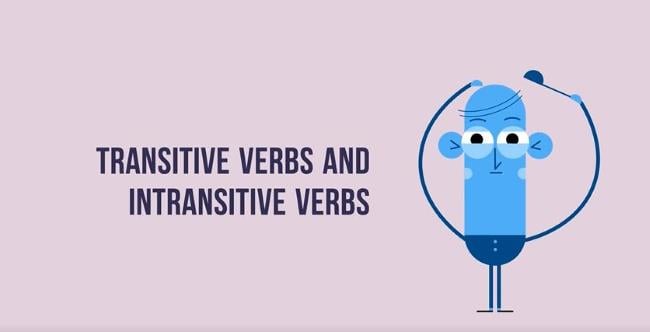Grammar Rules
Action Verbs
Transitive and Intransitive Verbs
What is a Transitive Verb?
A transitive verb is one whose action must be used in relation to an object, and when using the verb, it only makes sense if the verb is transferring action upon an object. That means the verb doesn’t sound good or work on its own without an object. Consider the verb to bring: The verb will not make sense if the action of the verb is not acting on something, i.e. you have to bring something or someone. Simply saying I bring will not make sense on its own, you must bring something, an object or a person or a feeling. That something or someone – Joe, a book, your brother, a good mood – is the direct object of the sentence, i.e. the thing that the verb is acting upon.- I bring (doesn’t make sense without an object).
- I bring a book for Grandma (makes sense because of the direct object, book).
- I will bring my brother to the meeting.
Examples of Transitive Verbs
There are lots of examples of transitive verbs. They can be any verb that fulfils the criteria of needing to confer action upon an object. Consider these examples and see how the verb exerts action on an object.- I love
- Please carry the books for me.
- Can we buy these ones?
- Johnny kicked the ball.
- She didn’t take anything from the table.
- I will send the note for the doctor.
- Love – you need to love something or someone for the verb to make sense.
- Carry – you need to carry something or someone for the verb to make sense.
- Buy – you need buy something for the verb to make sense.
- Kick – you need to kick something or someone for the verb to make sense.
- Take – you need to take something or someone for the verb to make sense.
- Send – you need to send something or someone for the verb to make sense.
What is a Intransitive Verb?
As you might guess, an intransitive verb is one that does not need to transfer action on an object in order to make sense. Consider the verb to run. You can run without transferring the action of running on a direct object. How did you get here so quickly? I ran. (There is no need for a direct object). Examples of Intransitive Verbs As with transitive verbs, there are many examples of intransitive verbs. They can be any verb that fulfills the criteria of not needing a direct object to confer action upon:- It snowed.
- We laughed.
- He cried. He will probably cry again tonight.
- We didn’t know.
- They died.
- When did they arrive?
- It snowed
- We laughed
- He cried
- We didn’t know right away.
- They died on Sunday night.
- Did they arrive on time?

Recognizing Transitive Verbs When You See Them
Unfortunately, it can sometimes be tricky to know if a verb is transitive because some verbs aren’t only transitive or intransitive. Consider the verb to eat, and look at these examples:- I eat fried eggs for breakfast.
- I eat quickly at breakfast.
- I walked.
- I walked the dogs.
- Daniel drives.
- Daniel drives a large truck.
- Barbara reads.
- Barbara reads 10 books a month.
- I understand.
- I understand you.
Recognizing Intransitive Verbs When You See Them
As mentioned above, many verbs can be transitive and intransitive, so to recognize the type of verb it is, you must look at other parts of the sentence. Consider the verb to sing, and look at these examples:- The birds sang the mating call.
- The birds sang.
- The birds sang
- The birds sang on the trees.